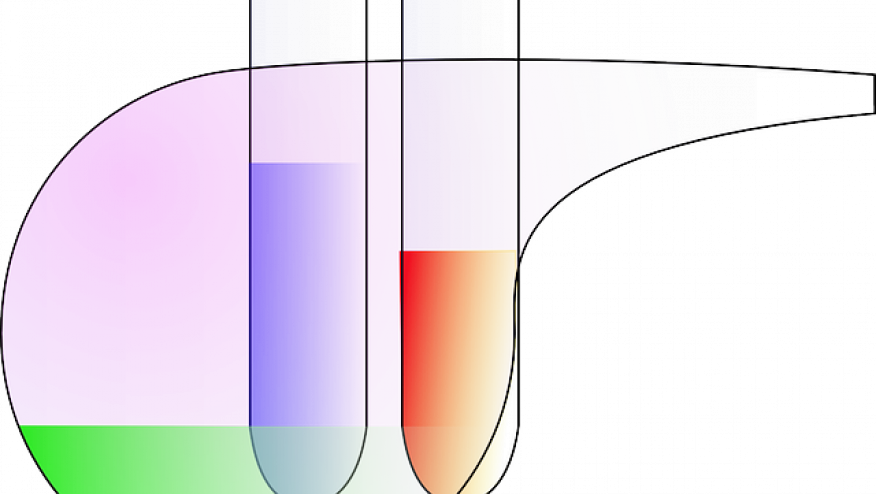Inconsistent ESR & CRP in Spondylitis Patients Save

Patients with active axial spondyloarthritis (axSpA) can lack evidence of inflammation on magnetic resonance imaging (MRI) but may develop evidence of inflammation over time.
In a post hoc examination of patients allocated to placebo in the ABILITY-1 study, nine of 29 patients with nonradiographic axSpA who had a normal MRI of the sacroiliac joints (SIJs) and the spine at baseline developed inflammation on MRI at 12 weeks, and 14 of 57 who had a normal level of C-reactive protein (CRP) developed an elevated CRP level.
"This study demonstrated that in biologic-naïve patients with clinically active nonradiographic axSpA, localized inflammation in the bone and systemic inflammation as measured by CRP may change during the natural course of the disease," wrote Xenofon Baraliakos, MD, from Ruhr-University in Bochum, Germany, and colleagues.
Monitoring of patients with clinically active nonradiographic axSpA can guide treatment decisions, they indicated in Rheumatology.
In ABILITY-1, a phase III, multicenter, randomized, double-blind study in patients with active nonradiographic axSpA, patients were randomized to adalimumab, 40 mg every other week, or placebo for 12 weeks, followed by open-label adalimumab for up to an additional 144 weeks. The primary outcome for the analysis was the development of objective signs of inflammation in the 94 patients not treated with a biologic agent who had clinically active axSpA but no inflammation in the SIJs and spine on MRI or a normal CRP at baseline.
Of the 94 placebo recipients in ABILITY-1, 29 had a normal MRI result for the SIJs and spine at baseline, 57 had a normal CRP level and 20 had both a normal MRI of the SIJs and spine and a normal CRP level at baseline. For the 20 patients in the last group, mean age was 38, 65% were women, 95% were white, and almost all (95%) reported inflammatory back pain.
MRI and CRP results at baseline and at week 12 were as follows:
- Among the 29 patients with no inflammation on MRI at both the SIJs and the spine at baseline, nine (31.0%) had a positive MRI result in either the SIJs or spine at week 12
- Among the 54 patients with normal MRI findings at the SIJs at baseline, five (9.3%) had a positive MRI result for the SIJs at week 12
- Among the 43 patients with no spinal inflammation on MRI at baseline, 11 (25.6%) developed spinal inflammation on MRI at week 12
- Of the 57 patients with a normal CRP level at baseline, 14 (24.6%) developed an elevated CRP level at one or more time points from weeks 4 to 12; of these 14, only three reported illnesses that could explain the elevation in CRP level (flu-like symptoms, viral syndrome, and sinusitis)
- Of the 20 patients with both a normal MRI of the SIJs and spine and a normal CRP level at baseline, 10 (50.0%) had inflammation on MRI at either the SIJs or spine, and/or an elevated CRP level at one or more time points post-baseline through week 12
There were no significant predictors for subsequent development of objective signs of inflammation in the 20 patients without MRI signs or without an elevated CRP level at baseline.
The mean duration of symptoms was 10.2 years for patients who developed inflammation by week 12 compared with 6.2 years for those who did not develop inflammation by week 12.
Of the patients with SIJ or spinal inflammation on MRI or an elevated CRP at baseline, only 8.2% (six of 73) no longer had objective evidence of inflammation during the 12-week treatment period. In patients with both inflammation on MRI at both the SIJs and spine and an elevated CRP level at baseline, all continued to have objective inflammation through week 12.
Formal guidelines for MRI or CRP monitoring frequency in patients with axSpA are lacking, Baraliakos and colleagues pointed out. "Because inflammation may be absent at one time point but present later, periodic monitoring of patients with clinically active nonradiographic axSpA is reasonable to assist with treatment decisions," they concluded.










If you are a health practitioner, you may Login/Register to comment.
Due to the nature of these comment forums, only health practitioners are allowed to comment at this time.